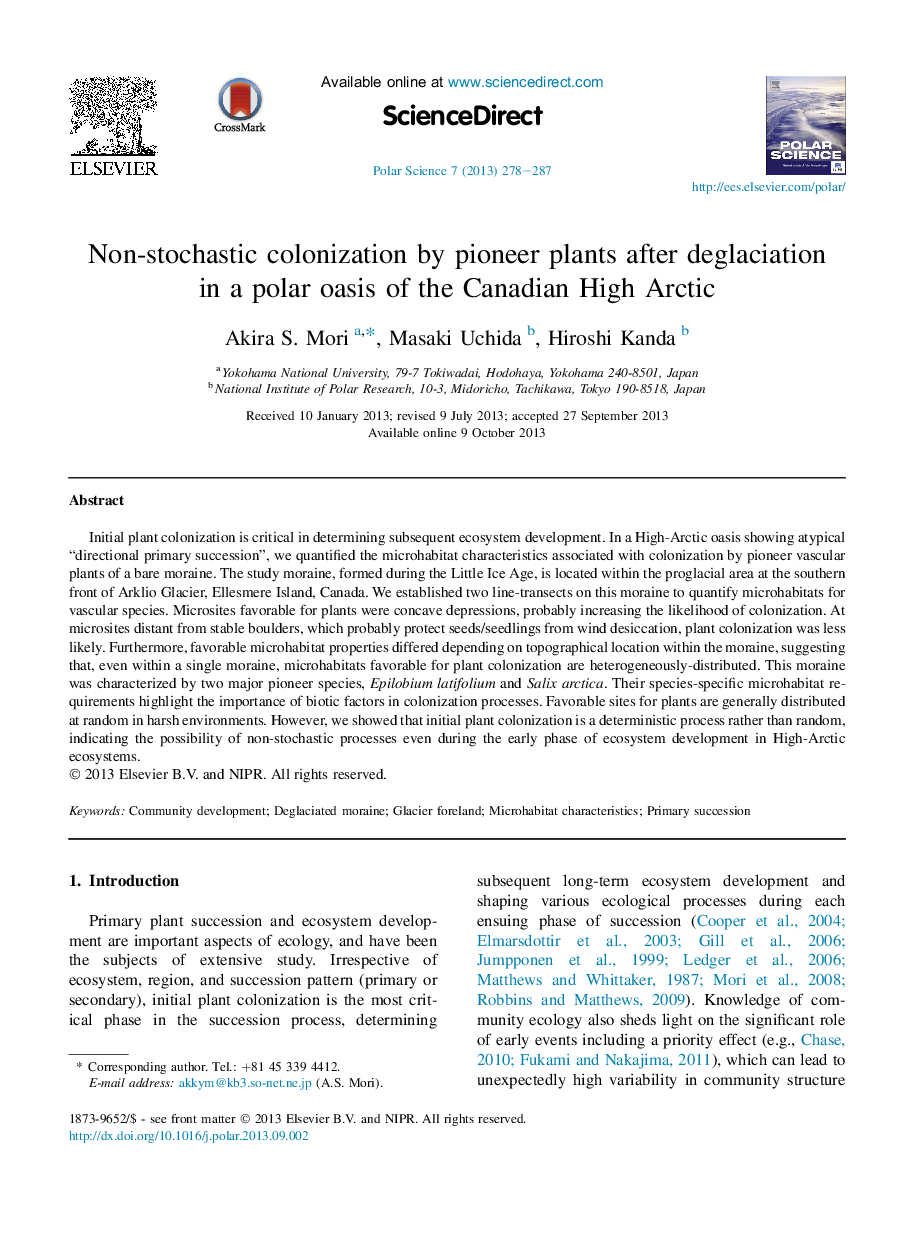| Article ID | Journal | Published Year | Pages | File Type |
|---|---|---|---|---|
| 4683218 | Polar Science | 2013 | 10 Pages |
Initial plant colonization is critical in determining subsequent ecosystem development. In a High-Arctic oasis showing atypical “directional primary succession”, we quantified the microhabitat characteristics associated with colonization by pioneer vascular plants of a bare moraine. The study moraine, formed during the Little Ice Age, is located within the proglacial area at the southern front of Arklio Glacier, Ellesmere Island, Canada. We established two line-transects on this moraine to quantify microhabitats for vascular species. Microsites favorable for plants were concave depressions, probably increasing the likelihood of colonization. At microsites distant from stable boulders, which probably protect seeds/seedlings from wind desiccation, plant colonization was less likely. Furthermore, favorable microhabitat properties differed depending on topographical location within the moraine, suggesting that, even within a single moraine, microhabitats favorable for plant colonization are heterogeneously-distributed. This moraine was characterized by two major pioneer species, Epilobium latifolium and Salix arctica. Their species-specific microhabitat requirements highlight the importance of biotic factors in colonization processes. Favorable sites for plants are generally distributed at random in harsh environments. However, we showed that initial plant colonization is a deterministic process rather than random, indicating the possibility of non-stochastic processes even during the early phase of ecosystem development in High-Arctic ecosystems.
